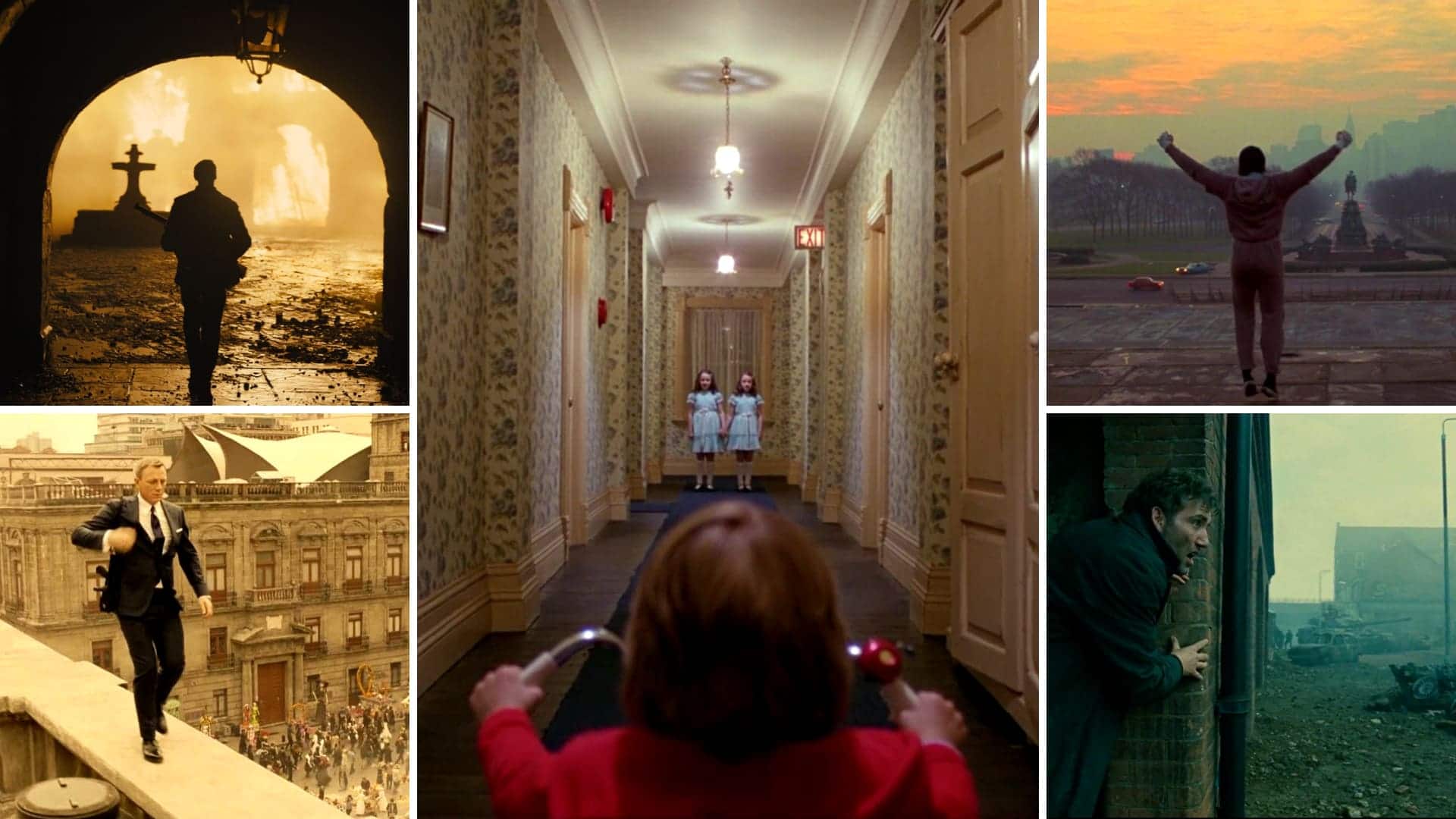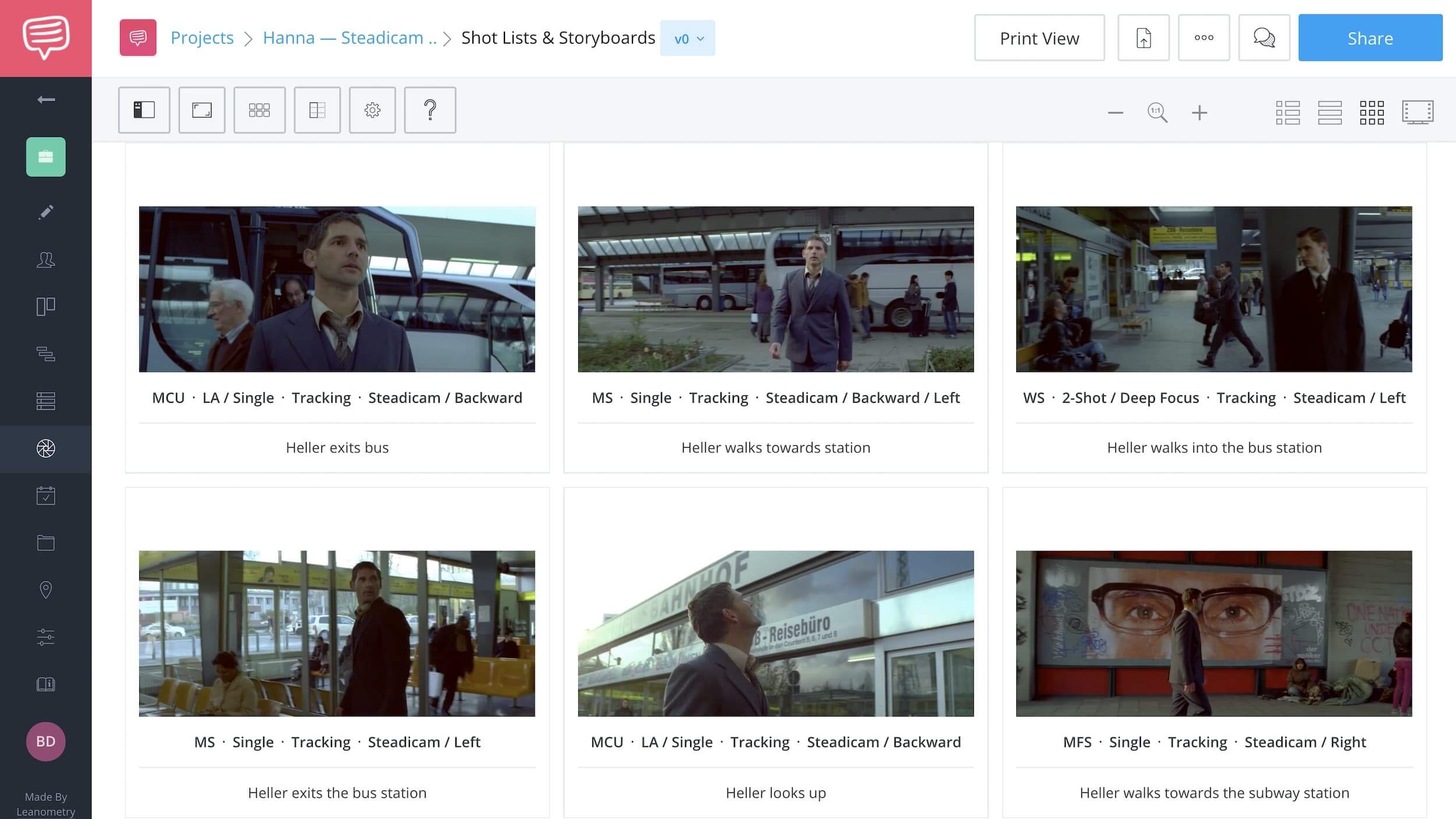Often the most impactful inventions in history have come about as a result of a beautiful accident. In film, especially on set, beautiful accidents happen all of the time. Luckily for us, a particular invention happened nearly half a century ago, early enough to give us some of the best footage we’ve ever seen. The Steadicam came about over trial and error. So what is it? What is a Steadicam shot? Let’s quickly define it, and learn more about the inventor of one of the most revolutionizing pieces of equipment in film history.
Steadicam Overview
An introduction to the Steadicam
It's impossible to avoid sounding redundant, so here it is. A Steadicam shot is a shot using a Steadicam stabilization system (yep) all performed by...you guessed it...a Steadicam Operator!
But of course, none of this helps if you’re not entirely sure what a Steadicam is, or how some of the best cinematographers have used it. So, before we get into how it changed the game...what is this thing?
Steadicam Shot Definition
What is a Steadicam shot?
A Steadicam shot uses a Steadicam, which is a camera stabilizer that combines the stability of a tripod, flexibility of a handheld camera, and the movement capability of a dolly. Steadicams absorb shake by mechanically isolating the operator’s movement as to always produce smooth tracking shots. A Steadicam Operator wears a vest that is attached to the camera rig. This makes the camera nearly weightless and easily controllable. It can get these smooth shots in any direction — around corners, up and down stairways, and even on bumpy roads.
The Steadicam eliminates the need for expensive crane shots, or the time and labor of setting up dolly tracks. This kind of camera movement changed the way the world experiences cinema.
Who invented the Steadicam?
- Garett Brown invented the Steadicam in 1974
- By 1975, Cinema Products Corporation introduces it to the public
A Steadicam is just one of the many types of film equipment and camera gear available. Before we look at the Steadicam more specifically, let's review the available options. Here's a video breakdown of the various types of camera rigs, how they work, and how they add to the "feel" and look of a shot.
Ultimate Guide to Camera Gear • Subscribe on YouTube
The Steadicam shot is just one of many types of camera movements in film. Here's a complete breakdown of each type along with their storytelling values and how they have contributed to some iconic moments in cinema history.
The Ultimate Guide to Camera Movement • Subscribe on YouTube
The number of movies you’ve seen that have used a Steadicam is probably endless. The list goes on and on. Below are just a few examples of the Steadicam shot in some of Hollywood’s most beloved films.
Camera fluidity in iconic Steadicam shots
STEADICAM SHOT LIST
Camera movement before Steadicam
Before the 70s, the director's job and the cinematographer's job was to decide between the only three choices when considering the storytelling value of camera movement in a scene.
They could go with a dolly shot, which does provide a very smooth movement of the camera. But this is a time-consuming process that wasn’t always suited for lower-budget films.
Another option would be a handheld shot where the camera operator would literally just hold the camera. However, the sheer size and weight of the cameras back then limited this option.
The manual grip allows for speed, control, creativity and flexibility, but it doesn’t solve the camera shake. The French New Wave filmmakers embraced the handheld shot but documentaries and newsreels were more suited for this kind of movement.
The final option would be a crane shot, which can guarantee a smooth shot with the added option to move the camera vertically. The downside is that cranes are large and cumbersome and only really work for exterior shots or on a soundstage.
Therefore, when the Steadicam camera stabilizer came onto the scene, it essentially combined the benefits of all these shots into one. In other words, Steadicam camera movement truly revolutionized how movies were made.
Let's take a look at a recent example and how the Steadicam can capture something as a chaotic as a fight scene with the ease and grace of a ballet. The film is Hanna (2011), directed by Joe Wright — whose iconic 5-minute long Steadicam shot in Atonement (2007) will go down as one of the greatest shots of all time.
Pay attention to how elaborate this scene is — not only the fight itself but traveling through various locations and finding strong, individual frame compositions along the way.
Here's the scene — a very effective use of a Steadicam shot
Meticulous planning and rehearsal are absolutely necessary if you're going to plan a Steadicam shot. Storyboarding a shot like this is the best way to start the process. Here's a storyboard of the fight scene from Hanna to give you an idea of something Joe Wright and his team would have had to prepare.
Single take Steadicam fight scene from Hanna
As you can see, what is possible with Steadicam camera movment is nearly limitless. A shot like this example from Hanna would never have been possible without the Steadicam camera stabilizer.
But who invented the Steadicam and what were some of the first Steadicam shots? Let's go back to the Steadicam's humble beginnings and track its evolution through filmmakers like Stanley Kubrick and Martin Scorsese.
STEADICAM CAMERA MOVEMENT
Brown’s Steadicam changed the game
In the mid 70s, aspiring cinematographer Garrett Brown, single handedly changed the way the world experienced film. The soon-to-be famous inventor started his career by shooting Subaru commercials with some of his earlier camera stabilizer contraptions.
Through a lot of trial and error, Brown finally landed on what would become the Steadicam rig. Brown discusses the excitement and process behind inventing the Steadicam below.
Steadicam inventor, Garrett Brown discusses first steps
We have the field footage he’s referring to as well as the extra footage that would change his life, and the movies, forever. He uses this new rig to follow his girlfriend (now wife), up Philadelpia’s iconic Art Museum’ steps. He runs alongside her, shooting a tracking shot from the top to the bottom, and back again. I run out of breath just watching it.
A few of the first Steadicam shots
This footage revealed what cameramen and women never had before. This new equipment could isolate them from the movement of the camera, while being in complete control the camera. No shake. No tracks. Just a mix of artistry and athleticism.
Brown began sending out his footage... and people, especially producers and directors, began to take notice.
A few filmmakers in particular, took a lot of notice. In the above video, did those steps look familiar?
Before the Rocky Franchise was a franchise at all, and well before we recognized those steps from the iconic Rocky montage, there was Garrett Brown and his girlfriend. A young couple testing out an invention that would have a profound impact on how we make films.
Steadicam Shot Example
Steadicam shots in Rocky
Rocky Director, John G. Avildsen, had been scouting countless locations for what is now considered an iconic sequence — the iconic training montage to end all training montages.
But all this prep seemed to be leading nowhere because Avildsen still had no idea how to pull it off. His assistant cameraman encouraged him to take a look at a demonstration reel for a new piece of equipment. It was of course the footage we just saw from Garrett Brown and his girlfriend running up the steps of the Philadelphia Museum of Art.
Now watch the scene in Rocky.
Brown runs with Rocky as the Steadicam Operator
While the very first film to use Brown’s Steadicam was Hal Ashby’s, Bound for Glory in 1976, (which one the Oscar for best cinematography), the technology really took hold after Rocky. The offers for Brown’s invention started pouring in.
The Steadicam spread like wildfire throughout Hollywood.
Steadicam Example
The Shining Steadicam shot
Filmmaking guru Stanley Kubrick was also impressed by what he saw in the demo reels. In fact, he wrote Garrett Brown a letter informing him just how interested he was.
Hear Brown recite Kubrick’s letter word-for-word, and take notice of several other shots from The Shining that show us how Kubrick nearly perfected Brown’s invention.
BTS with Kubrick, Brown, and Executive Producers
Kubrick ended up hiring Brown to operate the camera for The Shining. The most notable Steadicam shot is of Danny on his tricycle, riding through the creepy hotel hallways.
Kubrick masterfully took on the Steadicam as if it was his own creation. Kubrick’s motivated camera movement complemented Brown’s invention near perfectly. Here's a breakdown of Kubrick's directing style — pay attention to the section on tracking shots which features a lot of Steadicam gold.
Kubrick Directing Style • Subscribe on YouTube
The eerie smoothness of each Steadicam shot coupled with Kubrick’s perpetual centered camera framing, gave the movie the menacing feeling we all remember. The common feeling that the hotel is watching wasn’t just a product of Kubrick, but also the genius of Garrett Brown.
RELATED POSTS
Steadicam Shot Example
Raging Bull, Goodfellas, and Casino
In 1980, Martin Scorsese hired Garrett Brown to shoot a shot in Raging Bull. When De Niro entered the ring though, Scorsese thought the shot looked way too much like Rocky. So, needless to say, he fired him!
Raging Bull Steadicam shot
By this point, Scorsese understands that following a character through an environment, just like in Raging Bull, gives the character power and importance.
The Goodfellas Steadicam shot, operated by Larry McConkey, is definitely one of the greatest of all time and it is the perfect application of the technology because it informs character and story — more than just a fancy camera move.
Goodfellas Steadicam shot
A few years later, in Casino, Scorsese again finds a way to use Steadicam camera movement. The ease with which the mob was skimming off the top of the casino's earnings is matched by the ease and smooth camera floating in, around, and back out of the room.
Casino Steadicam shot
Steadicam shots have been used in thousands of movies, from Star Wars to modern romantic comedies. Garrett Brown has shot a ridiculous amount of them, but not all, and today there are a slew of experienced Steadicam operators as Steadicams have become a staple on set.
Many operators are members of the Steadicam Operators Association (SOA), formed in 1988 by none other than Garrett Brown. SOA not only represents them but also holds regular training workshops.
Garrett Brown didn’t start his career in the film industry. In fact, former folk singer had a brief stint selling Volkswagens! If only he knew in the '60s and early '70s that he would revolutionize the film industry.
Brown won an Oscar for his Steadicam achievement. But he had loftier goals than just the big screen. This folk-singer turned cinematographer has now became an incredibly prolific inventor. His other inventions include the Skycam, Flycam, and even the Divecam. He also uses a mini Steadicam for his smartphone.
UP NEXT
Explore different camera movements
We've covered the Steadicam shot but there are many other camera movements to discuss. As you amass your camera movement repertoire, you will be able to amplify your visual storytelling exponentially. You're already on your way but the only question is which camera movement will you dive into next?
Showcase your vision with elegant shot lists and storyboards.
Create robust and customizable shot lists. Upload images to make storyboards and slideshows.

